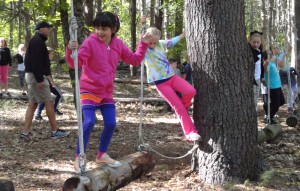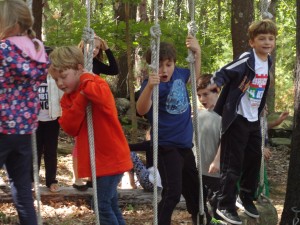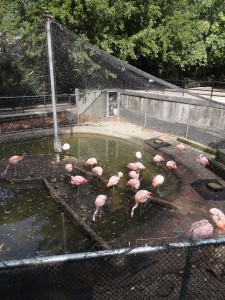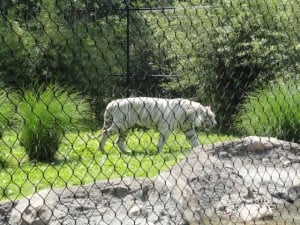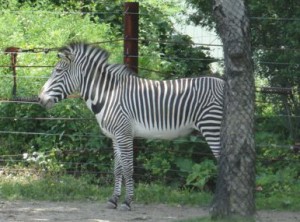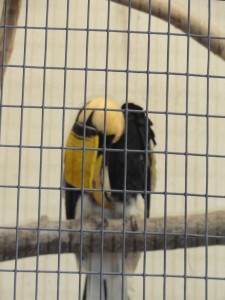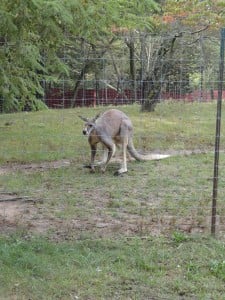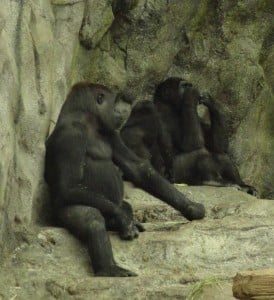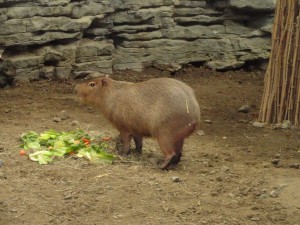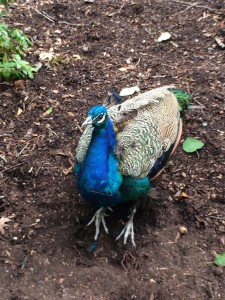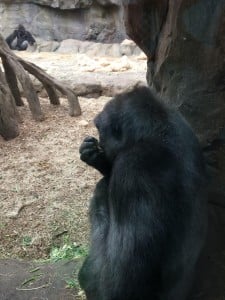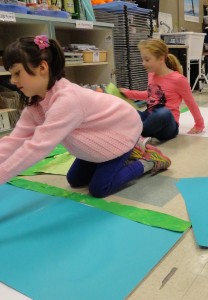 There’s a lot going on in 3E. We’re learning about food chain and food webs, making our zoo habitats and working to complete our informational paragraphs. We’re planning to set up a new “art gallery” featuring our animals so you’ll have a preview of what you’ll be seeing as you enter our zoo. We’re reading and writing and doing science and math projects most days. We’re also working very hard to behave in thoughtful ways to support learning for everyone.
There’s a lot going on in 3E. We’re learning about food chain and food webs, making our zoo habitats and working to complete our informational paragraphs. We’re planning to set up a new “art gallery” featuring our animals so you’ll have a preview of what you’ll be seeing as you enter our zoo. We’re reading and writing and doing science and math projects most days. We’re also working very hard to behave in thoughtful ways to support learning for everyone.
SEL – Self-Awareness and Responsible Decision Making
We’ve gathered together our reflections and set learning goals for the year. We’ve set goals as a class, and the children have set their own. They have an idea about what they would like to achieve as readers, writers and mathematicians. They know what their strengths are and what their challenges are. Each child has chosen work to show who they are as beginning 3rd grade learners.
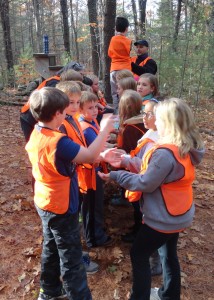 It is challenging to write about thinking and learning. Some of their reflections and goals will make you smile. They are beginning to realize that they are in charge of what they accomplish. They are growing each day and working to positively impact our learning community.
It is challenging to write about thinking and learning. Some of their reflections and goals will make you smile. They are beginning to realize that they are in charge of what they accomplish. They are growing each day and working to positively impact our learning community.
Pushes and Pulls All Around
This week we’ve continued learning about invisible forces – pushes and pulls – and how engineers use what they know about lines of force to create and build. We explored pushes and pulls by creating “Hopper Poppers.” We learned how to launch them and then tried to think of ways to modify them to change or increase their lift. Next, we learned about bridges and how they are built. We learned about pillars and arches. We learned about suspension bridges and about trusses. We learned some about the story of how The Golden Gate was designed. Later, we used our information to build a bridge with two sheets of paper. At first, “that’s impossible” was heard throughout the room, but then we discovered how folding (making trusses) makes the paper stronger. We learned how arches change the lines of force by pushing up. Our strongest designs used pillar to support the span of the bridge. It was fun to see how the groups worked and persevered. Our next challenges involve learning about friction and gravity.
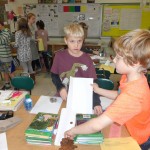
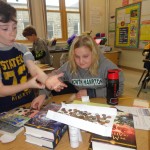
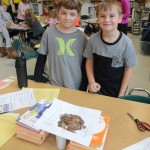
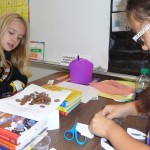
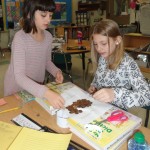 Hands-on science is fun. You may notice that your child is coming home with unfinished papers related to these topics. At this point in our study the class is quick to make and build, to do and create. Planning and recording are low on the priority scale at this point and that’s fine. When you talk to your child about these projects you can hear what they are learning and thinking and discovering. We can tell their curiosity is growing as well as they understanding and that’s what science is all about – developing a sense of wonder and asking, “what if…”
Hands-on science is fun. You may notice that your child is coming home with unfinished papers related to these topics. At this point in our study the class is quick to make and build, to do and create. Planning and recording are low on the priority scale at this point and that’s fine. When you talk to your child about these projects you can hear what they are learning and thinking and discovering. We can tell their curiosity is growing as well as they understanding and that’s what science is all about – developing a sense of wonder and asking, “what if…”
Rounding Numbers and Learning More About Problem Solving
This week we learned about rounding up and down. We are comfortable rounding to the nearest 10. We are learning how this process extends toward rounding to the nearest 100 and 1,000. Larger amounts are challenging for the children to think about and organize. They can easily picture how tens group into hundreds. Beyond that is a challenge, but they are working to feel more secure about the rules of mathematics – 5, 6, 7, 8, 9 round up; 4, 3, 2, 1 round down whether ones, tens or hundreds.
We’ve also been working to solve problems as efficiently as possible. You’ll notice changes back and forth between adding and multiplying. We need to practice different fact sets. In class we’re working to bring automaticity to 2’s and 5’s and we’re exploring the power of 10.
Bits and Pieces –
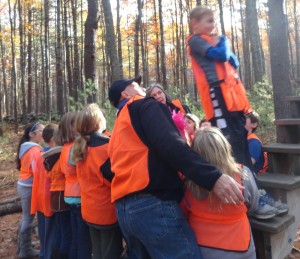 We all participated in the Trust Fall Challenge with Mr. Caron. It was scary and exciting. Even though we have a very talkative class and one that jokes when it might be nice to be serious, we all realized we can count on each other. That’s nice.
We all participated in the Trust Fall Challenge with Mr. Caron. It was scary and exciting. Even though we have a very talkative class and one that jokes when it might be nice to be serious, we all realized we can count on each other. That’s nice.
We began our fourth chapter read-aloud, School Days According to Humphrey. We are looking forward to what happens in Room 26.
We are looking forward to our conferences and sharing our work with you.

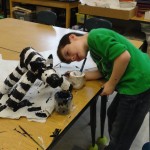 We are also looking forward to setting up our zoo. We’ve been creating our habitats and writing about our animals. We’ve explored a variety of leads so you’ll be encouraged to stop by and read our information posted with our exhibit.
We are also looking forward to setting up our zoo. We’ve been creating our habitats and writing about our animals. We’ve explored a variety of leads so you’ll be encouraged to stop by and read our information posted with our exhibit.
 Hi 3E! I hope you are finding your way to our blog because you’re looking for problems to solve and are excited about what we’re discovering in math. Have fun solving problems with multiplication or problems with rounding to the nearest 10. Type your math thinking in a comment. 🙂
Hi 3E! I hope you are finding your way to our blog because you’re looking for problems to solve and are excited about what we’re discovering in math. Have fun solving problems with multiplication or problems with rounding to the nearest 10. Type your math thinking in a comment. 🙂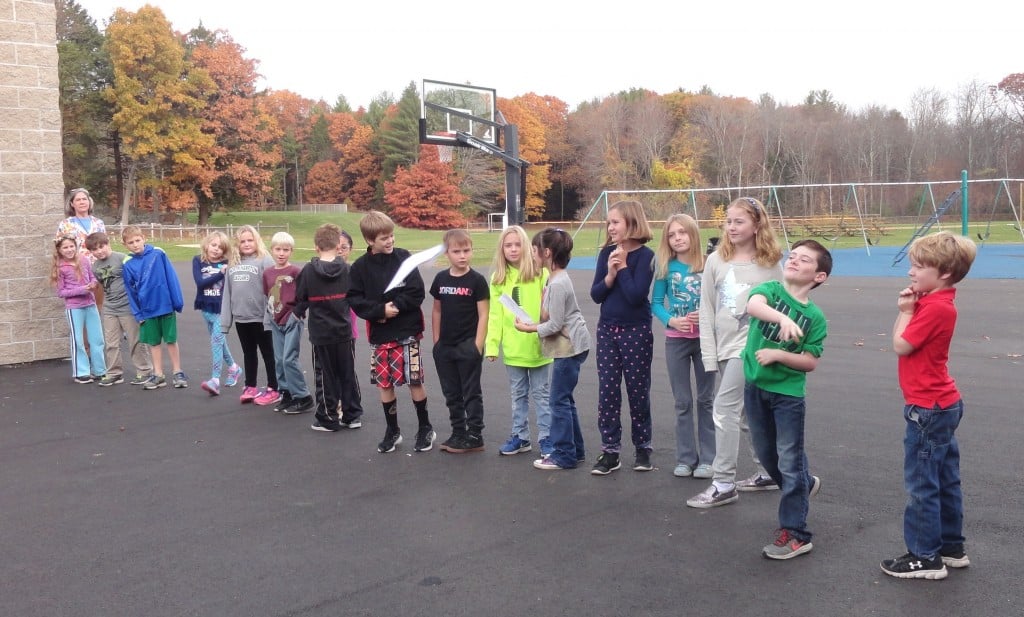 Exploring Invisible Forces
Exploring Invisible Forces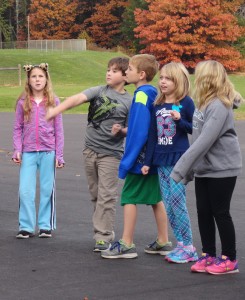 or she has an idea about what shape makes a paper airplane go straight and fast. Ask your child if he or she has ideas of the forces that make an airplane go once it leaves a hand. We know about the push of thrust and the pull of gravity. We know the air provides lift if the wings are just right… We are going to continue our exploration of Invisible Forces over the next few weeks and then we will have another go at folding planes to go straight and fast. I wonder what we’ll discover.
or she has an idea about what shape makes a paper airplane go straight and fast. Ask your child if he or she has ideas of the forces that make an airplane go once it leaves a hand. We know about the push of thrust and the pull of gravity. We know the air provides lift if the wings are just right… We are going to continue our exploration of Invisible Forces over the next few weeks and then we will have another go at folding planes to go straight and fast. I wonder what we’ll discover.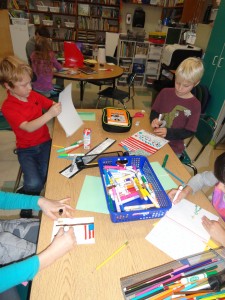 forward to writing more letters to service men and women in the future. It felt good to take a moment to think of the many things we have to be grateful for.
forward to writing more letters to service men and women in the future. It felt good to take a moment to think of the many things we have to be grateful for.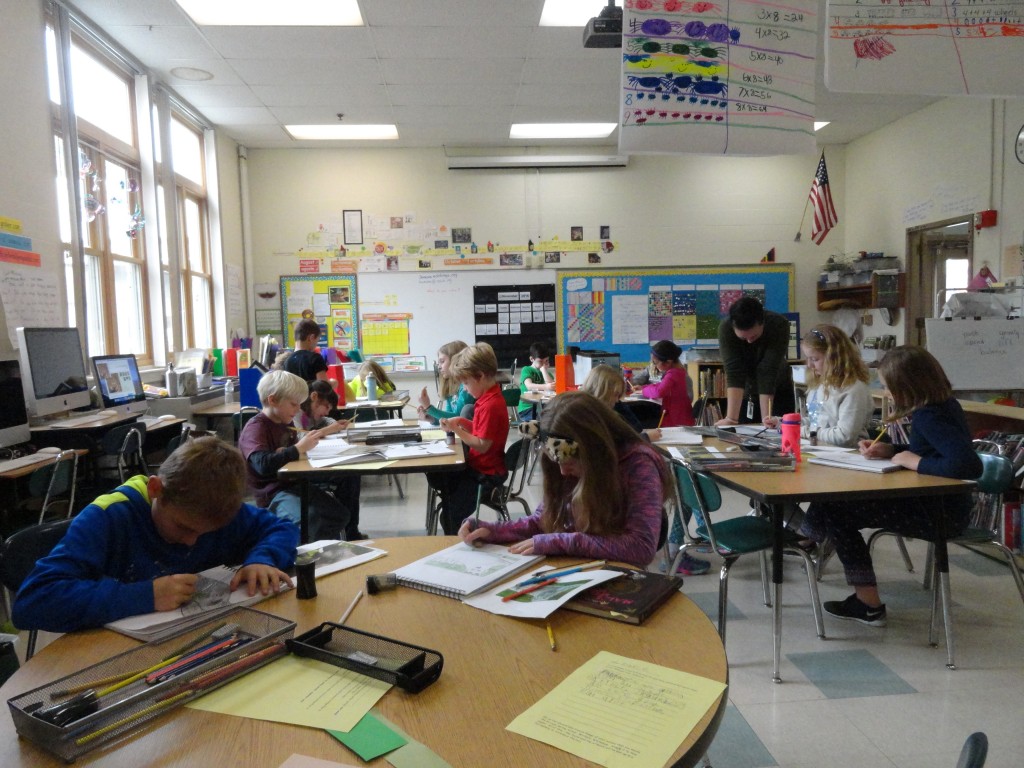
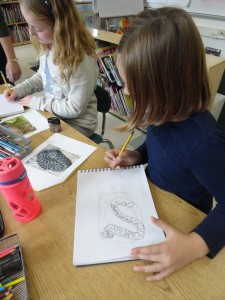
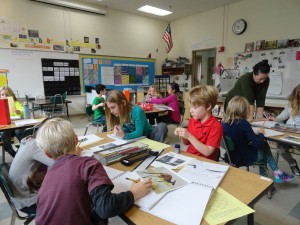
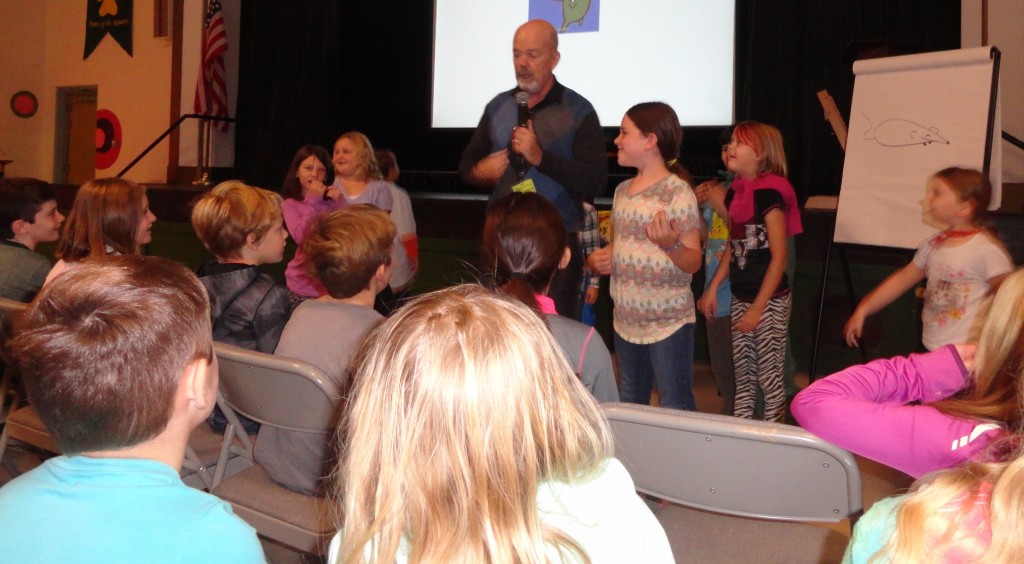 Our week has been full of research, multiplication, small group challenges and whole class challenges. We also had the opportunity to meet Greg Trine, author of the Melvin Beederman, Jo Schmo and Willy Maykit series. It was really fun to meet an author that most of the children knew through his books. He shared how he came to writing and how many years of writing and rewriting and rewriting again it took (12) before he had a story
Our week has been full of research, multiplication, small group challenges and whole class challenges. We also had the opportunity to meet Greg Trine, author of the Melvin Beederman, Jo Schmo and Willy Maykit series. It was really fun to meet an author that most of the children knew through his books. He shared how he came to writing and how many years of writing and rewriting and rewriting again it took (12) before he had a story  published in a magazine. It took six more years after that before he had a story long enough to become a book and then a series. Mr. Trine drew for us, held an evil laugh contest and had members of the audience act out a super hero story as he told it to us. Later on some in our class had the opportunity to meet in the library for lunch with the author. They learned about his upcoming books – a new series with a dog and a cat. We’ll have to look to see when that will be published.
published in a magazine. It took six more years after that before he had a story long enough to become a book and then a series. Mr. Trine drew for us, held an evil laugh contest and had members of the audience act out a super hero story as he told it to us. Later on some in our class had the opportunity to meet in the library for lunch with the author. They learned about his upcoming books – a new series with a dog and a cat. We’ll have to look to see when that will be published. At the end of last week during our discussion about Responsible Decision Making and Self-Management the class decided they would like to do something to reduce disruptive behaviors interfering with learning. Many shared management systems that had been used before to encourage students to be more mindful and respectful. And so we have come up with a process of keeping track of behavior. Talk to your child to see how s/he feels this process is helping make more time for learning.
At the end of last week during our discussion about Responsible Decision Making and Self-Management the class decided they would like to do something to reduce disruptive behaviors interfering with learning. Many shared management systems that had been used before to encourage students to be more mindful and respectful. And so we have come up with a process of keeping track of behavior. Talk to your child to see how s/he feels this process is helping make more time for learning.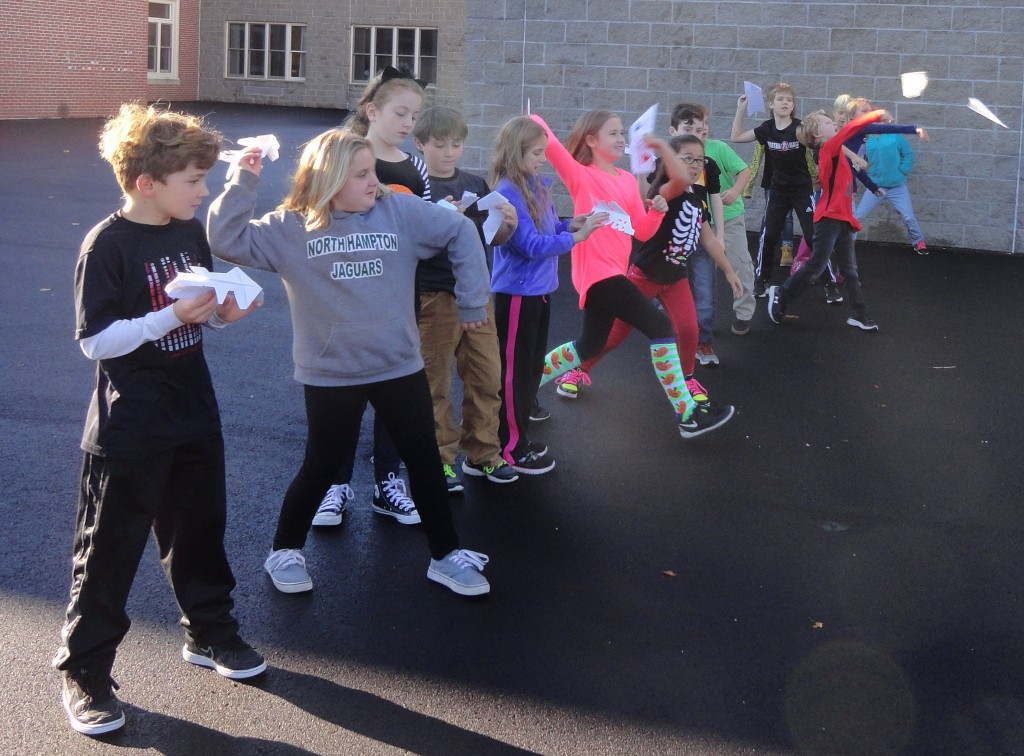 movement.
movement.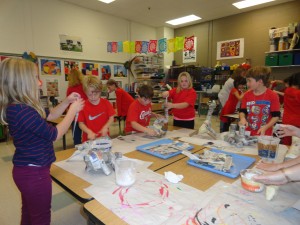 We’ll be working to write letters to soldiers next week for the 50 Letters in 50 Days project. If you’ve decided to do that with your family as well, please send them in with your child next week so they are ready to send on
We’ll be working to write letters to soldiers next week for the 50 Letters in 50 Days project. If you’ve decided to do that with your family as well, please send them in with your child next week so they are ready to send on 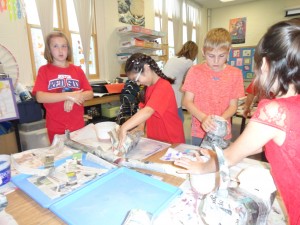 Our Zoo
Our Zoo
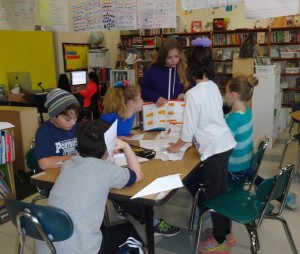 It has been a week full of exploration, multiplication and choices. We’ve had some changes so we’ll see Mrs. Fremeau during lunch Mondays and Fridays, but she’ll spend the majority of her time in 2I (Mrs. Ibey had her baby) and 3CL. Miss DiPietro will be joining our classroom. We met her yesterday and enjoyed having her in our classroom.
It has been a week full of exploration, multiplication and choices. We’ve had some changes so we’ll see Mrs. Fremeau during lunch Mondays and Fridays, but she’ll spend the majority of her time in 2I (Mrs. Ibey had her baby) and 3CL. Miss DiPietro will be joining our classroom. We met her yesterday and enjoyed having her in our classroom.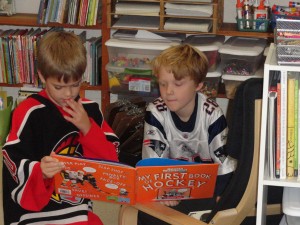 The three statements that are guiding our self-evaluations are:
The three statements that are guiding our self-evaluations are: We’ve been learning how multiplication is a quicker way of adding equal groups or sets. It’s repeated addition. We’ve been reading and creating arrays. We know about the commutative property and are sure the 6×5 is the same as 5×6. We began to develop our fact chart so we can keep track of the facts we know and the facts we still need to work on. At first it seemed that learning 100 facts would be impossible and then we began to fill in our chart. We all know the 1’s facts. We all know the 2’s. We all know the 5’s and the 10’s. That’s 40 known facts. And because we know the commutative property we know all the “turn around facts” as well. It turns out we know 64 of those 100 facts already and that doesn’t include things like 3×3. We decided it was a doable project. We’ll begin with the 3’s next week.
We’ve been learning how multiplication is a quicker way of adding equal groups or sets. It’s repeated addition. We’ve been reading and creating arrays. We know about the commutative property and are sure the 6×5 is the same as 5×6. We began to develop our fact chart so we can keep track of the facts we know and the facts we still need to work on. At first it seemed that learning 100 facts would be impossible and then we began to fill in our chart. We all know the 1’s facts. We all know the 2’s. We all know the 5’s and the 10’s. That’s 40 known facts. And because we know the commutative property we know all the “turn around facts” as well. It turns out we know 64 of those 100 facts already and that doesn’t include things like 3×3. We decided it was a doable project. We’ll begin with the 3’s next week.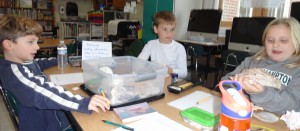 Bit and Pieces –
Bit and Pieces – 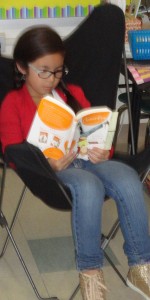 Each week since the beginning of school we’ve been learning to look at our world as a scientist We observed, drew and painted leaves. We followed the scientific process from hypothesis to conclusion with our Raisin and Soda experiment. And we looked at shells to document what we know and what we wonder. Asking questions is something that drives innovation and creation. We are going to grow from those experiences as we begin a science unit about Invisible Forces.
Each week since the beginning of school we’ve been learning to look at our world as a scientist We observed, drew and painted leaves. We followed the scientific process from hypothesis to conclusion with our Raisin and Soda experiment. And we looked at shells to document what we know and what we wonder. Asking questions is something that drives innovation and creation. We are going to grow from those experiences as we begin a science unit about Invisible Forces.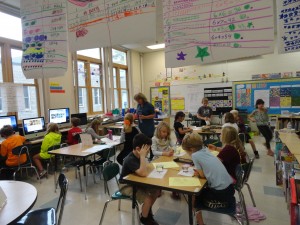 Thank you for connecting with what we are doing in our classroom. Thank you for checking 3E News and your child’s blog.
Thank you for connecting with what we are doing in our classroom. Thank you for checking 3E News and your child’s blog. 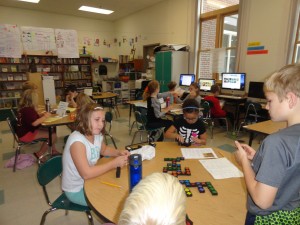 There are five areas of social emotional learning. They are called pillars because all academic learning stands upon their framework. They are self-management, self-awareness, relationship skills, responsible decision making, and social awareness. Of course they all work together and are closely intertwined, but we’ve been focusing our discussions on self-management this week. That means we’ve been trying to be more aware of our own feelings. We’ve listed good and bad feelings and the in between feelings. We tried to think about making choices that lead to positive outcomes. And lastly we’ve tried think about goals we’d make for ourselves in this area that would help promote both social and academic growth.
There are five areas of social emotional learning. They are called pillars because all academic learning stands upon their framework. They are self-management, self-awareness, relationship skills, responsible decision making, and social awareness. Of course they all work together and are closely intertwined, but we’ve been focusing our discussions on self-management this week. That means we’ve been trying to be more aware of our own feelings. We’ve listed good and bad feelings and the in between feelings. We tried to think about making choices that lead to positive outcomes. And lastly we’ve tried think about goals we’d make for ourselves in this area that would help promote both social and academic growth.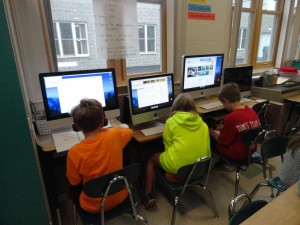 We’ve begun to learn about the continents and how varied, and yet, similar they are. We’ve been reading about them and looking at them on maps. We’re learning terms like equator, hemisphere, and peninsula. We’re also learning how people fit into geography and create neighborhoods, towns, counties, and countries. We’ll combine this learning with what we are learning about our animals.
We’ve begun to learn about the continents and how varied, and yet, similar they are. We’ve been reading about them and looking at them on maps. We’re learning terms like equator, hemisphere, and peninsula. We’re also learning how people fit into geography and create neighborhoods, towns, counties, and countries. We’ll combine this learning with what we are learning about our animals.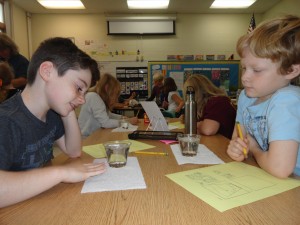 We’ve been researching and learning to take notes about what we understand as we read. Learning from informational text is a challenge. There are many words that we can pronounce and read through that we do not understand. We are learning what to do in this case. Scientists are specific, so we need to be as well. We are practicing observation. We are learning to be more descriptive and precise, but that takes time.
We’ve been researching and learning to take notes about what we understand as we read. Learning from informational text is a challenge. There are many words that we can pronounce and read through that we do not understand. We are learning what to do in this case. Scientists are specific, so we need to be as well. We are practicing observation. We are learning to be more descriptive and precise, but that takes time.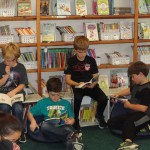 How is homework fitting into your life? I mean that sincerely. In 3rd grade we are hoping to instill in children the need for quiet time and focus on assignments. We hope that homework is completed in 35 minutes or less a day . We want kids to relax. We’ve chosen “due on Friday” to insure that families can enjoy their weekends. If you find a “due on Monday” time works better for your family – by all means do that.
How is homework fitting into your life? I mean that sincerely. In 3rd grade we are hoping to instill in children the need for quiet time and focus on assignments. We hope that homework is completed in 35 minutes or less a day . We want kids to relax. We’ve chosen “due on Friday” to insure that families can enjoy their weekends. If you find a “due on Monday” time works better for your family – by all means do that.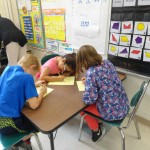 We worked to understand the difference between the set (repeated addition) model and
We worked to understand the difference between the set (repeated addition) model and  contest. It would be great if that is something your child would like to do. The artwork must be completed by February 24th. If you’ve misplaced that information I have another copy and could send it home again.
contest. It would be great if that is something your child would like to do. The artwork must be completed by February 24th. If you’ve misplaced that information I have another copy and could send it home again.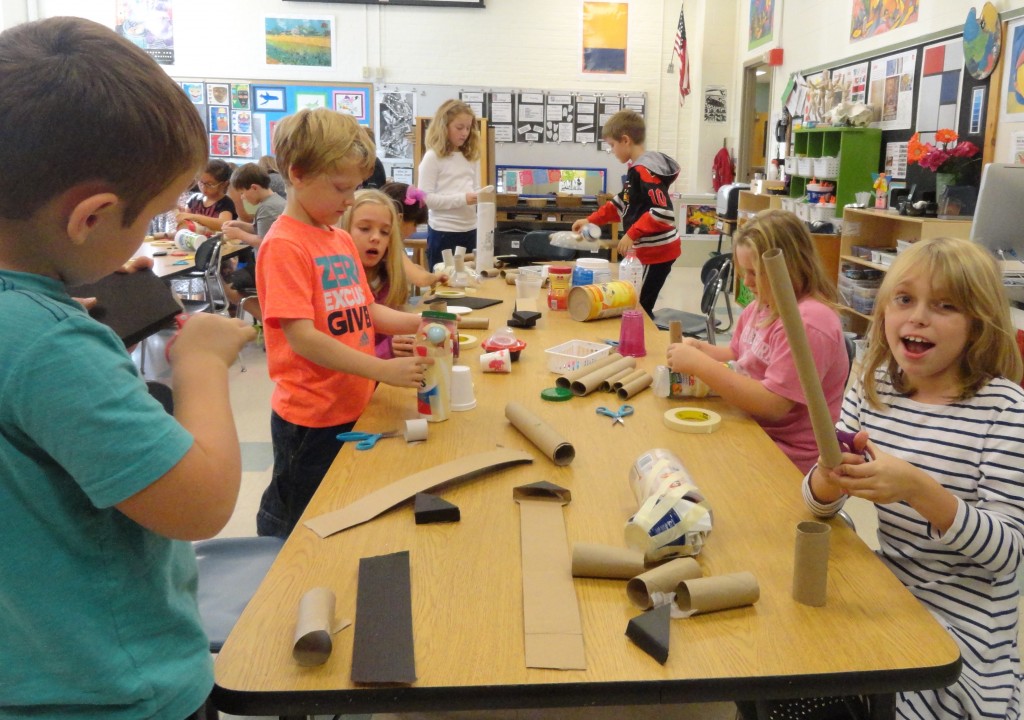 Our week has been full of reading, writing, research and discovery. We’ve been learning to research and write on the computers. We’ve been working in centers to observe as scientist and to develop logic and a sense of fair play. We’ve been exploring the practice of mindfulness and considering ways to work more effectively together to maximize learning.
Our week has been full of reading, writing, research and discovery. We’ve been learning to research and write on the computers. We’ve been working in centers to observe as scientist and to develop logic and a sense of fair play. We’ve been exploring the practice of mindfulness and considering ways to work more effectively together to maximize learning. Thank you for talking to your child about the choices s/he is making with regard to behavior. We’ve been talking about it a lot in class. It seems that when it is on our minds all the time, all of us are able to assess ourselves and monitor how our choices affect others. When we stop talking – many lose their self-awareness and then their self-control. Please keep checking in at home. Ask your child how s/he did with talking during lessons or trying to be funny at the wrong time or doing the right thing at the right time or staying focused.
Thank you for talking to your child about the choices s/he is making with regard to behavior. We’ve been talking about it a lot in class. It seems that when it is on our minds all the time, all of us are able to assess ourselves and monitor how our choices affect others. When we stop talking – many lose their self-awareness and then their self-control. Please keep checking in at home. Ask your child how s/he did with talking during lessons or trying to be funny at the wrong time or doing the right thing at the right time or staying focused.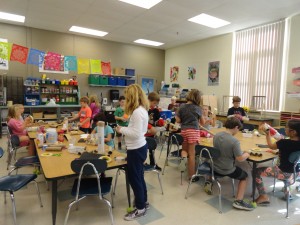 We talked about what it means to be present. We know if each of us adopts this habit, we’ll all be better able to learn. We’ll be more successful. Here is a list of things the class said they would choose to be more present and to help our classroom became a place where everyone feels successful.
We talked about what it means to be present. We know if each of us adopts this habit, we’ll all be better able to learn. We’ll be more successful. Here is a list of things the class said they would choose to be more present and to help our classroom became a place where everyone feels successful.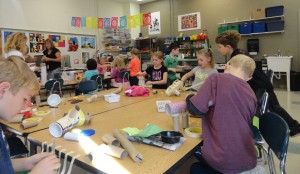 I will not laugh when others are talking.
I will not laugh when others are talking. We have continued our exploration of multiplication this week by learning about arrays. We know that arrays are rectangles made of columns and rows. We’ve learned that you read them down the left side and across the bottom. So
We have continued our exploration of multiplication this week by learning about arrays. We know that arrays are rectangles made of columns and rows. We’ve learned that you read them down the left side and across the bottom. So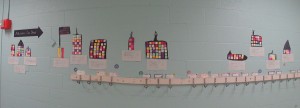
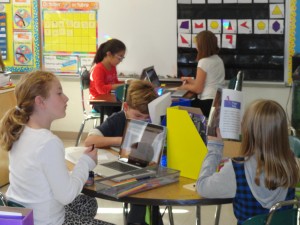 We have continued to work on blogging and blog posts. Some of the children have submitted second posts while others are still working. We have a 45 minute writing session dedicated to blogging each week and then the children have the choice to write in their journal or work on their blog during the independent writing block. Some have chosen to blog, while others have chosen to write in their notebook. That is the reason for the difference. Please keep checking and leaving comments as often as you can. It is very motivating.
We have continued to work on blogging and blog posts. Some of the children have submitted second posts while others are still working. We have a 45 minute writing session dedicated to blogging each week and then the children have the choice to write in their journal or work on their blog during the independent writing block. Some have chosen to blog, while others have chosen to write in their notebook. That is the reason for the difference. Please keep checking and leaving comments as often as you can. It is very motivating.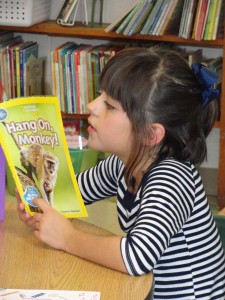 We’ve begun work on our zoo. The children are researching both in books and from online resources. We are learning more about online research in both technology class and in the library as well. With Mrs. Wyman’s and Ms. Schmidt’s help we are learning about many different information resources and about ways we can use them to learn more about our animals and their habitats.
We’ve begun work on our zoo. The children are researching both in books and from online resources. We are learning more about online research in both technology class and in the library as well. With Mrs. Wyman’s and Ms. Schmidt’s help we are learning about many different information resources and about ways we can use them to learn more about our animals and their habitats.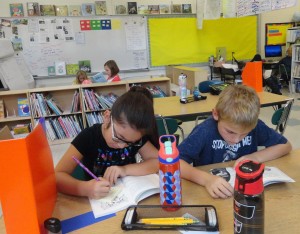 North Hampton artwork in the 2017 calendar.
North Hampton artwork in the 2017 calendar.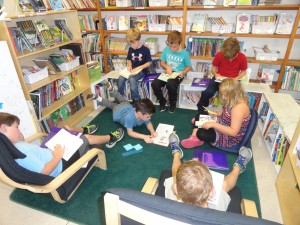 This was a full and busy week. We had pictures on Monday, and the Shelter in Place Drill on Tuesday. We worked on our informational writing prompt, worked through a “3 minute” reading assessment and gave our best effort in a basic fact check for addition. Those things were a bit different and stressful for some. On the exciting side of things, we began our animal research project and began building our animal models for our zoo exhibit. We also were able to get all children started on their blogs. Many have completed their first posts, while others are still in the drafting process and will post soon.
This was a full and busy week. We had pictures on Monday, and the Shelter in Place Drill on Tuesday. We worked on our informational writing prompt, worked through a “3 minute” reading assessment and gave our best effort in a basic fact check for addition. Those things were a bit different and stressful for some. On the exciting side of things, we began our animal research project and began building our animal models for our zoo exhibit. We also were able to get all children started on their blogs. Many have completed their first posts, while others are still in the drafting process and will post soon. Writing grows in so many ways. This week the children completed their informational writing prompt. This, combined with the narrative prompt they completed a few weeks ago, and the persuasive prompt they will be completing in another few weeks will establish their baseline expectation as a 3rd grade writer. We’ll grow from there. There is a lot to do as a writer in 3rd grade and so we write in many ways.
Writing grows in so many ways. This week the children completed their informational writing prompt. This, combined with the narrative prompt they completed a few weeks ago, and the persuasive prompt they will be completing in another few weeks will establish their baseline expectation as a 3rd grade writer. We’ll grow from there. There is a lot to do as a writer in 3rd grade and so we write in many ways.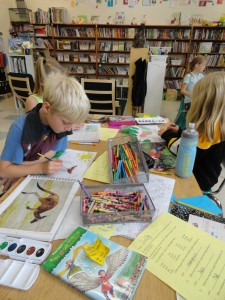 A second writing opportunity comes in artist-writers’ workshop. This is a designed as a quiet reflective time to create. At this point in the process, children have selected a small ceramic animal to copy and put in a setting four times. Each time they used a different medium: crayon, colored pencil, marker and watercolor. The goal was to make each image identical and to discover how each medium worked in our sketchbooks. Then next step was to select an image to copy. We’ve been sticking to animals at this point. Some children have created one picture, in the same time that others have created three or four. We are at the place where we will look at our work and write about it in two different ways. First we will write about the creative process, what we see and the choices that were made. And second we will use our pictures as a springboard for a story. This could be a personal narrative of how the picture was created, or it could be a fictional narrative inspired by the subject of the picture.
A second writing opportunity comes in artist-writers’ workshop. This is a designed as a quiet reflective time to create. At this point in the process, children have selected a small ceramic animal to copy and put in a setting four times. Each time they used a different medium: crayon, colored pencil, marker and watercolor. The goal was to make each image identical and to discover how each medium worked in our sketchbooks. Then next step was to select an image to copy. We’ve been sticking to animals at this point. Some children have created one picture, in the same time that others have created three or four. We are at the place where we will look at our work and write about it in two different ways. First we will write about the creative process, what we see and the choices that were made. And second we will use our pictures as a springboard for a story. This could be a personal narrative of how the picture was created, or it could be a fictional narrative inspired by the subject of the picture.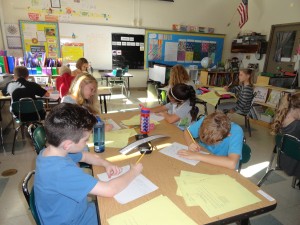 We spent time this week reviewing and examining the features of informational texts. Now we have both organizational choices to make, as well as selecting the text features we wish to include in our writing. We looked at headings, captions, tables of contents, and indexes. We looked and emboldened words and glossaries. We looked at how illustrations, diagrams and charts add even more information to the words. We also looked at different examples on informational writing. We read many books, but we also looked at the trading cards designed by the Franklin Park Zoo. We began to design our own Zoo
We spent time this week reviewing and examining the features of informational texts. Now we have both organizational choices to make, as well as selecting the text features we wish to include in our writing. We looked at headings, captions, tables of contents, and indexes. We looked and emboldened words and glossaries. We looked at how illustrations, diagrams and charts add even more information to the words. We also looked at different examples on informational writing. We read many books, but we also looked at the trading cards designed by the Franklin Park Zoo. We began to design our own Zoo 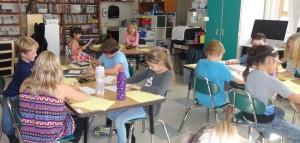 Trading Cards. We are looking forward to beginning our research process so we will be able to create and share our own informational pieces to teach you all about the animals in our zoo.
Trading Cards. We are looking forward to beginning our research process so we will be able to create and share our own informational pieces to teach you all about the animals in our zoo. This week we learned more about multiplication and examined the patterns of repeated addition. We made function or ratio charts to see how the patterns grow. We also connected multiplication and division. We looked at sets of things and broke them up into equal groups to show what the process of division. We’ve begun to look at sets of dot stickers to see if we can discover which operation is represented. When there are many groups that have the same amount of dots, it is multiplication. When there is one large group broken into smaller groups, it is division. When there are many groups of various sizes it is addition and one a portion of a larger group is shaded over it is subtraction. As I write this to you, it seems obvious, of course that is what we see and know. But for the children, this understanding is growing along with the strengthening number concepts. You can help by pointing out how math is all around. For example, if you purchase yogurt in fours or applesauce in sixes ask your child if he or she can figure out how many you’ll use in a month, if you use one or two packs in a week. If you know how many miles it is from your house to the practice field, ask your child to calculate the miles you’ll travel in a week or a month. At first they may be drawing out or tallying each thing, but later they’ll become more efficient. Thank
This week we learned more about multiplication and examined the patterns of repeated addition. We made function or ratio charts to see how the patterns grow. We also connected multiplication and division. We looked at sets of things and broke them up into equal groups to show what the process of division. We’ve begun to look at sets of dot stickers to see if we can discover which operation is represented. When there are many groups that have the same amount of dots, it is multiplication. When there is one large group broken into smaller groups, it is division. When there are many groups of various sizes it is addition and one a portion of a larger group is shaded over it is subtraction. As I write this to you, it seems obvious, of course that is what we see and know. But for the children, this understanding is growing along with the strengthening number concepts. You can help by pointing out how math is all around. For example, if you purchase yogurt in fours or applesauce in sixes ask your child if he or she can figure out how many you’ll use in a month, if you use one or two packs in a week. If you know how many miles it is from your house to the practice field, ask your child to calculate the miles you’ll travel in a week or a month. At first they may be drawing out or tallying each thing, but later they’ll become more efficient. Thank  you for helping bring math to life and showing that it is all around us.
you for helping bring math to life and showing that it is all around us. In an around all of this work, we also talked a great deal about expected behaviors for 3rd grade. There is a lot of interrupting, to the point of interfering with learning and safety. We would appreciate you have a chat about this. Please don’t let your child tell you tales of what other children are doing. Please encourage them to think of how to do their best work when things are challenging. Continual shushing or asking others in the middle of a lesson to stop is as distracting as the distraction. Deciding to argue rather than ignore or physically move is a distraction too. Walking through the group rather than around. Choosing to become angry and argumentative during table work, rather than allowing someone to believe something that may not be true is a disruption too. There are things we can all (me included in this) do to make our classroom more peaceful and successful. I know we can. We have a wonderful class. We will grow in self-control and social awareness, just as we grow as writers, readers, artists, scientist, explorers and mathematicians. Thanks for your help!
In an around all of this work, we also talked a great deal about expected behaviors for 3rd grade. There is a lot of interrupting, to the point of interfering with learning and safety. We would appreciate you have a chat about this. Please don’t let your child tell you tales of what other children are doing. Please encourage them to think of how to do their best work when things are challenging. Continual shushing or asking others in the middle of a lesson to stop is as distracting as the distraction. Deciding to argue rather than ignore or physically move is a distraction too. Walking through the group rather than around. Choosing to become angry and argumentative during table work, rather than allowing someone to believe something that may not be true is a disruption too. There are things we can all (me included in this) do to make our classroom more peaceful and successful. I know we can. We have a wonderful class. We will grow in self-control and social awareness, just as we grow as writers, readers, artists, scientist, explorers and mathematicians. Thanks for your help!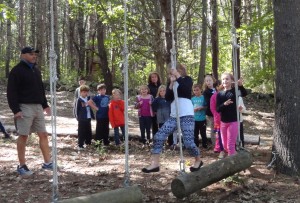 It was so nice to see many of you at Curriculum Night. We appreciate your support in making this a great year. Thank you.
It was so nice to see many of you at Curriculum Night. We appreciate your support in making this a great year. Thank you.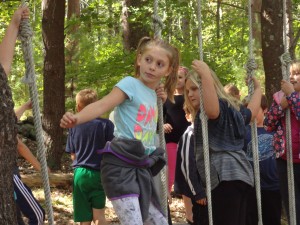 We also read about Michael Jordan as a boy. He loved basketball, but he was short and could never get the ball past the tall guys. He stopped playing in games for a while, waiting to grow. While he waited, he practiced and practiced. Eventually he went back to the game and… we know where that took him. His habits for success were determination, practice and focus.
We also read about Michael Jordan as a boy. He loved basketball, but he was short and could never get the ball past the tall guys. He stopped playing in games for a while, waiting to grow. While he waited, he practiced and practiced. Eventually he went back to the game and… we know where that took him. His habits for success were determination, practice and focus. We can see parts of ourselves in the biographies we are reading. We can feel what courage and determination it takes to keep going. We also know that it is sometimes hard to believe in ourselves or ignore teasing and unkind taunts. We can also (when we are honest) recognize our less than kind selves. We all have choices – how do we want to grow our intelligences? What habits of success do we want to foster and practice?
We can see parts of ourselves in the biographies we are reading. We can feel what courage and determination it takes to keep going. We also know that it is sometimes hard to believe in ourselves or ignore teasing and unkind taunts. We can also (when we are honest) recognize our less than kind selves. We all have choices – how do we want to grow our intelligences? What habits of success do we want to foster and practice?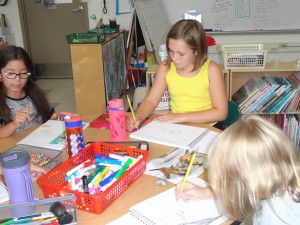 This learning is launching our global geography, habitat and animal research project. We are looking forward to
This learning is launching our global geography, habitat and animal research project. We are looking forward to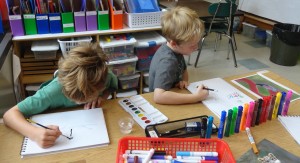 Bits and Pieces –
Bits and Pieces – 

 Ask your child about The River Runner challenge. It requires a great deal of self-management and self-awareness, while at the same time being socially aware as well. Ask your child they remember most about the activity? What was his or her biggest challenge within the activity?
Ask your child about The River Runner challenge. It requires a great deal of self-management and self-awareness, while at the same time being socially aware as well. Ask your child they remember most about the activity? What was his or her biggest challenge within the activity?